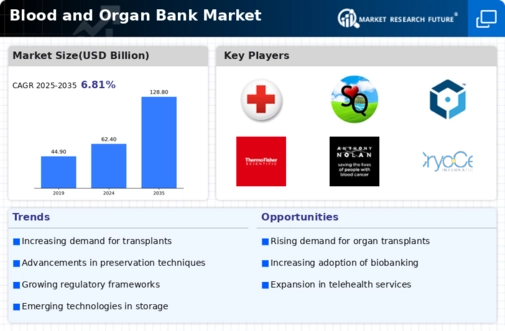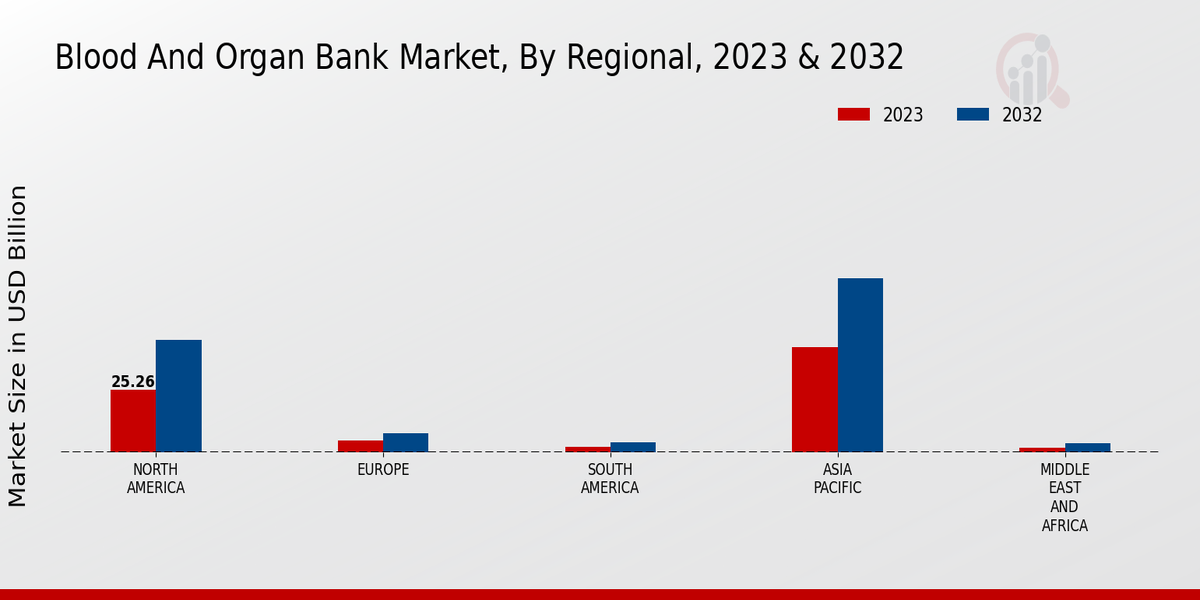Increasing Demand for Transplants
The Global Blood and Organ Bank Market Industry experiences a notable surge in demand for organ transplants, driven by rising incidences of chronic diseases and an aging population. As of 2024, the market is valued at approximately 62.4 USD Billion, reflecting the urgent need for organ donations. This demand is projected to escalate, with estimates suggesting that by 2035, the market could reach 128.8 USD Billion. The increasing prevalence of conditions such as diabetes and heart disease necessitates a robust supply of organs, thereby propelling the growth of the Global Blood and Organ Bank Market Industry.
Government Initiatives and Funding
Government initiatives aimed at promoting organ donation and transplantation are pivotal in shaping the Global Blood and Organ Bank Market Industry. Various countries implement policies and funding programs to enhance public awareness and encourage donations. For instance, national campaigns and educational programs are designed to inform citizens about the importance of organ donation. Such initiatives not only increase the number of registered donors but also improve the infrastructure of blood and organ banks. As a result, these efforts are likely to foster a more robust market environment, facilitating growth and accessibility in the industry.
Rising Awareness of Blood Donation
The Global Blood and Organ Bank Market Industry is positively influenced by increasing public awareness regarding the importance of blood donation. Educational campaigns and community outreach programs have successfully highlighted the critical need for blood products, leading to higher donation rates. This heightened awareness is crucial, especially in regions where blood shortages are prevalent. As a result, blood banks are better equipped to meet the demands of healthcare systems. The ongoing efforts to promote blood donation are expected to sustain the growth trajectory of the market, ensuring a steady supply of blood products for transfusions and medical procedures.
Emerging Markets and Global Expansion
Emerging markets present substantial growth opportunities for the Global Blood and Organ Bank Market Industry. Countries with developing healthcare infrastructures are increasingly investing in blood and organ banking systems to meet local healthcare needs. This expansion is driven by rising healthcare expenditures and a growing middle class that demands better medical services. As these markets evolve, they are likely to adopt best practices from established systems, thereby enhancing their operational efficiencies. The anticipated compound annual growth rate of 6.81% from 2025 to 2035 underscores the potential for growth in these regions, contributing to the overall expansion of the industry.
Technological Advancements in Preservation
Technological innovations in organ preservation techniques significantly enhance the viability and longevity of donated organs. The Global Blood and Organ Bank Market Industry benefits from advancements such as hypothermic machine perfusion and novel preservation solutions, which improve organ quality and reduce wastage. These technologies not only extend the time frame for successful transplants but also increase the number of viable organs available for transplantation. As the industry evolves, these advancements are likely to play a crucial role in meeting the growing demand for organ transplants, thereby contributing to the overall growth of the market.
























